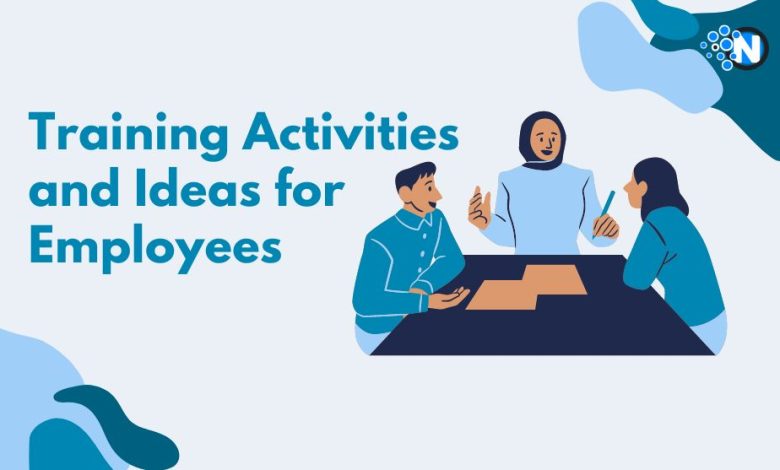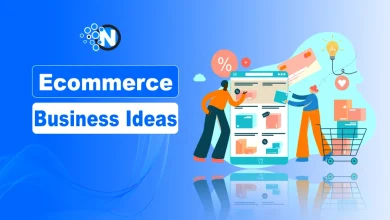Best Training Activities and Ideas Examples for Your Employees

As an L&D specialist, keeping everyone committed and motivated during training can sometimes be challenging. However, creative training ideas can help boost participation, retention, and application. In this article, I will share some of my top employee training ideas and activities to inspire you to design your employee training activities.
Best Ideas and Examples for Engaging Your Employees
Here are the top strategies for planning training content and delivery in an engaging, interactive way:
1. Workshops
In-person or virtual workshops allow lots of hands-on practice in a social learning environment. These are the best for restaurant LMS. Thus, for customer service training, learners pair up to roleplay various scenarios like angry customers, confused guests, negotiation tactics, etc. As the facilitator, I walk around and listen in on conversations to provide individualized feedback.
To make it more fun, provide props or print out scenario cue cards so employees can randomly pick them. Encourage exaggerated reactions or costumes/accents to get people out of their comfort zones!
Another workshop activity is small group breakouts to tackle issues using the tools/concepts covered. So, for a metrics workshop, have cross-functional teams analyze a business case study to identify optimization opportunities. Each group presents their recommendations at the end as a friendly competition.
2. Games
Games add fun, surprise, and a bit of healthy competition into otherwise dry material. For broader topics, along with other staff training ideas, I like Jeopardy/trivia games, which work perfectly for virtual training using online templates and screen sharing. Employees can type answers into chat for points.
Like product feature knowledge, narrower training lends itself well to Pictionary among teams. Or, if practising a defined process, use Four Corners with steps posted in different corners of the room. Ask a review question, and everyone runs to the corner of the right answer! You can pick any training games for employees that you like. Generally, the level of engagement depends on your team and their interests.
Simple games like tic tac toe rendered on a whiteboard also work using marker pens in person or digital annotation tools virtually. Just ensure gameplay is quick and reinforces retention of key facts or concepts from the training. Get creative, tying it back to objectives!
3. Webinars
Interactive webinars provide information while keeping learners engaged through activities like polls, quizzes, chat, Q&A sessions, etc. Set it up where employees must answer the poll question shown before advancing or tuning into a group discussion for a minimum duration. The key here is to pic useful and fun training topics for employees.
I also love using collaborative whiteboards for diagramming, mapping, labelling, etc, during conceptual overviews. Teams can annotate slides simultaneously and present back drawings to teach each other.
Follow up asynchronous training webinars with discussion forums for unanswered questions or virtual “office hours” scheduled conveniently over lunch hours. This provides continued peer learning and dialogue around the application of concepts introduced.

The Top 7 eLearning Training Activities
For self-paced online courses, look for ways trainees can engage with content through:
1. Slide courses
Escape the dreaded “death by PowerPoint” by enhancing slides with built-in tools leveraging highlighting, drawing, embedding links/videos, comment functions, etc.
I like using icons prompting learners to take a specific action like:
- Lightbulb = Insert takeaway or insight
- Question mark = Type inquiry this point raises
- Star = Note key learning to highlight for future recall
This active notetaking helps reinforce retention and checks for comprehension.
Hyperlinking key terms or concepts to external resources, downloadable job aids, or even related courses also facilitates further learning with a few simple clicks.
2. Quizzes
Well-placed quizzes motivate learners to put new knowledge into practice immediately. After the employee training activities, I always wrap up key sections with a 3-5 question check for understanding and covering the main points.
Mix up question formats to go beyond basic multiple choice. Matching, image selection, rank/order, hot spot identification, etc, add variety and applicability of learned concepts.
Ensure that regardless of the team training ideas, you always provide detailed explanations accompanying all response options – right and wrong – to close knowledge gaps. Provide references back to the course section for review as needed to answer incorrectly.
3. Polling
Anonymous polls encourage participation by removing peer pressure of being “right or wrong”. Use fun questions tied to the upcoming topic to spark intrigue and surface assumptions/perceptions of learners upfront.
Revisit the same poll questions at the end of relevant sections or course completion to capture opinion shifts resulting from the new education provided. Tie back to driving home objectives.
4. Training videos
Videos provide a change of pace from text-heavy slides. Film bite-sized video demos of processes covered rather than just talking head lecturing. Show real examples of constructs in action through observations of exemplary performers.
Insert quick comprehension checks periodically with multiple choice questions appearing as overlays inside the video players. Or use interactive video makers like EdApp to branch based on learner responses to scenario prompts.
5. Roleplay simulations
Immersive real-world practice scenarios remain among the most efficient interactive training ideas, providing application opportunities in a safe environment through adaptive branching roleplay situations. Tracking decision trees provides insight into common pitfalls for post-simulation coaching.
I find these Excel for sales objection handling, customer service recovery, leadership decision making – any skill involving dynamic human interactions. Provide pre-set feedback based on selections to steer toward optimal choices when it matters most in the real world.
Roleplay Simulation Example
Let’s take a look at the training activities examples. The hospitality online learning and roleplay simulation allows employees to practice applying customer service skills through interactive scenarios with different guest interactions:
- Dealing with an upset guest complaint – Validate feelings, apologize, and take ownership by investigating the issue and following up. Avoid dismissing concerns or passing the blame.
- Managing an impatient, frustrated guest – Pause to acknowledge the situation and express empathy and urgency to assist. Avoid ignoring emotional state.
- Early hotel check-in request – Warmly greet guests and explain the situation while aiming to accommodate special requests when possible. Avoid quoting strict policy rules without a willingness to help.
These interactive training activities allow choosing dialogue responses and then provide feedback on which statements delight versus dissatisfy guests based on hospitality best practices covered in training.
Reinforcing optimal responses for navigating common hotel challenges helps prepare employees to stay cool, courteous, and solution-focused. Key highlights:
- Validate feelings.
- Show urgency and willingness to help.
- Apologize for the inconvenience, and follow through on promises.
- Express appreciation.
The wide range of real-world scenarios allows practicing and applying these core concepts until they become second nature, resulting in superior guest experiences reflecting a five-star service culture.




